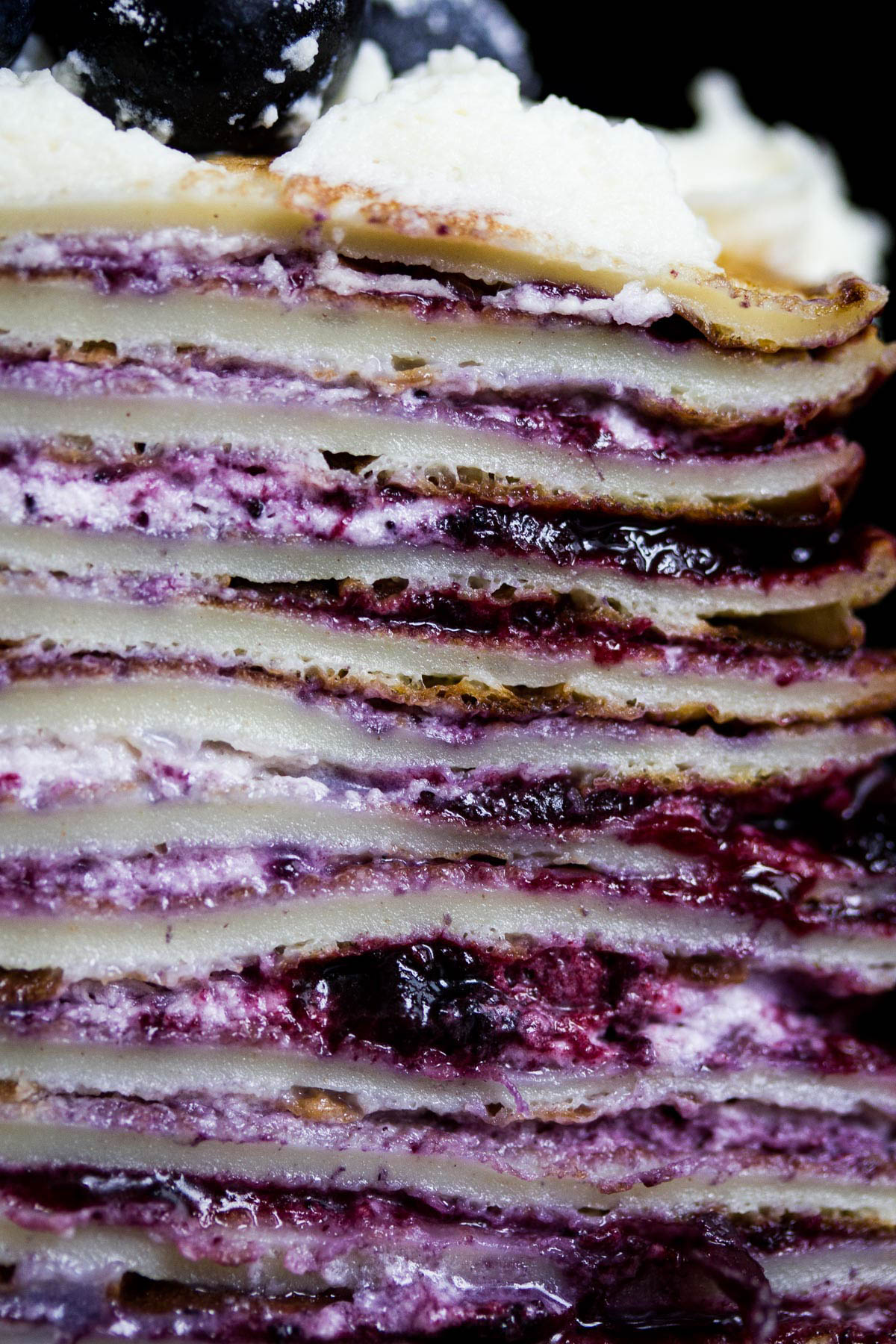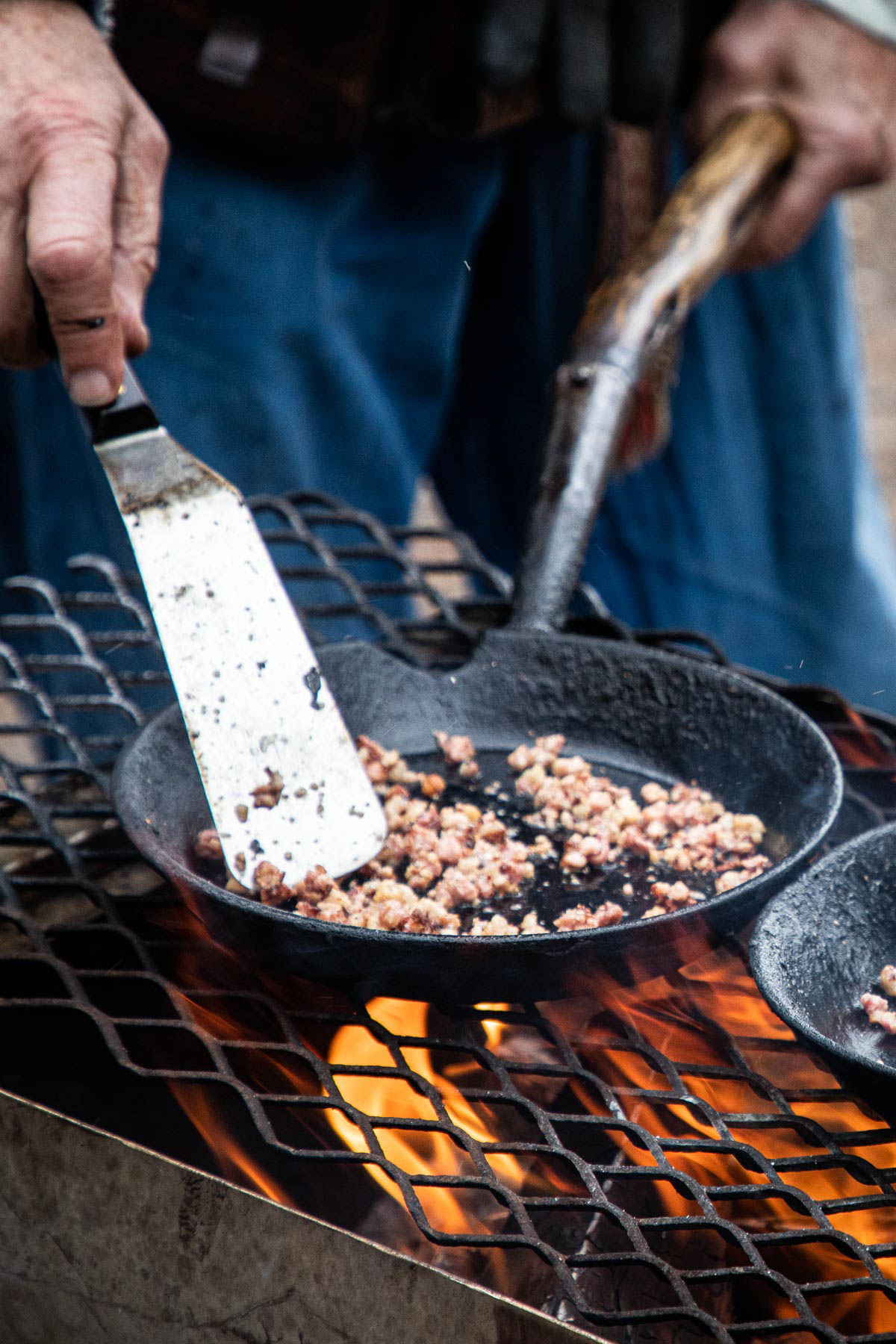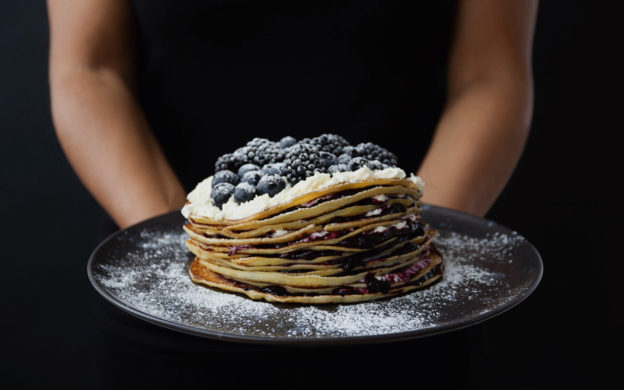Sweden is the land of the pancake (and fermented fish, but this cuisine is far more palatable…) Swedes may not have invented the pannkaka but they’ve definitely made it their own. Since at least the 1500s, pancakes have been a part of the Swedish diet, and the inspiration behind a number of proverbs and old parables. At one point, pancakes were even considered a fancy food because they contained luxury ingredients like white flour and sugar. Today, humbled and delicious, pancakes are enjoyed all across the land. From potato fritters to egg cakes, you’ll want to explore the world of Swedish pancakes.
Here’s our guide to every Swedish pancake to know:
Klassiska Svenska pannkaka (classic Swedish pancake)
Main Ingredients | Flour, eggs, milk, butter, and sugar |
Best for | Traditionalists |
If you’ve ever had the pleasure of tasting a Swedish pancake, it’s most likely to have been one of these. Classic pannkakor are sweet and buttery with a general thickness that’s somewhere between an American-style pancake and a French crêpe. For centuries, Swedes have eaten pannkakor on Thursday nights following a meaty yellow pea soup called ärtsoppa. Since Swedish pancakes are more saccharine than their trans-Atlantic cousins, they’re usually topped with fresh cream and tart lingonberry jam – homemade using freshly foraged berries is best.
 |  |
Plättar (small pancake)
Main Ingredients | Flour, eggs, milk, and butter |
Best for | Traditionalists who just want a small taste |
Plättar are essentially the same as klassiska Svenska pannkaka, except they’re smaller and whisked with less sugar. Traditionally, they were a festive food fried in a special pan (called plättpanna) that is flat with multiple wells to cook the batter.
Raggmunk (potato pancake)
Main Ingredients | Potatoes, flour, eggs, milk, and butter |
Best for | Rösti lovers |
This beloved Swedish pancake is made with grated potatoes and is typically eaten during the winter months. The secret to making raggmunk is to use ‘old’ potatoes; their high starch content keeps the pancake intact. Swedes believe the crispier the edges, the better the raggmunk. And don’t forget the fried pork and lingonberries. They all get piled on top!

© Adobe Stock, E-lona
Rårakor (lacy potato pancake)
Main Ingredients | Potatoes |
Best for | A blini alternative |
Unlike raggmunk, rårakor are potato pancakes made entirely out of spuds. Sometimes they’re referred to as a ‘potato fritters’ to distinguish between the two. You can find them topped with pork or dressed up with caviar, shrimp, crème fraiche, onions, and chives.
Kolbulle (coal bun)
Main Ingredients | Flour, water, and bacon |
Best for | Campers or those avoiding eggs |
Kolbulle is a traditional pancake that dates back to the 1800s. The name translates to “coal bun,” a reference to who would eat it and how it was prepared. Kolbullar was a “poor man’s food,” meant to feed hard-working coal miners. No eggs are used (since there’s no refrigeration in a mine) and it’s finished with a healthy heaping of lingonberry jam.
 |  |
Gotländska saffranspannkaka (saffron pancake)
Main Ingredients | Rice, flour, eggs, milk, sugar, almonds, and saffron |
Best for | Those with guests to impress |
Originating from the island of Gotland in the Baltic Sea, saffranspannkaka is an aromatic, sweet dessert. It’s a type of Swedish ugnspannkaka, or oven pancake, that’s baked rather than fried and, in the olden days, was prepared around Christmas using leftover rice porridge. The need for sugar and saffron made the pancake somewhat exclusive, but now you can find it all over the island.
Blodplättar (blood pancake)
Main Ingredients | Blood, flour, eggs, and beer or water |
Best for | Adventurous eaters (or vampires) |
You probably guessed from the name that a blodplättar is not your average pancake. (In Swedish the name literally means ‘blood platelet.’) It’s an Arctic meal from the northernmost regions around Europe and is a mixture of whipped reindeer blood, rye flour, eggs, and a “weak spirit” like beer. The product is a thick and crispy burgundy pancake that’s served with lingonberry jam, salted pork, or reindeer meat.
Pannkakstårta (pancake cake)
Main Ingredients | Flour, eggs, milk, sugar, cream, and berries |
Best for | Those who would rather eat cake |
A pannkakstårta is a stack of pancakes layered with sweet cream, berries, and (more recently) Nutella. It’s considered more of a celebratory cake than a breakfast food in Sweden, but you can totally have a morning slice. We would!
Jästa pannkaka (yeast pancake)
Main Ingredients | Flour, eggs, milk, sugar, and yeast |
Best for | Fans of American pancakes |
A favorite among Swedes in the southern part of the country, a jästa pannkaka is perhaps the only yeast-leavened pancake in classic Swedish cooking. The yeast is activated with hot milk and the batter is left to rise for roughly an hour before frying in a cast iron pan. The resulting pancake is fluffy and similar to an American pancake, but smaller and served with jam or fresh berries. Jästa pannkakor are also known as stenkakor, or stone pancakes, because in the 1600s, they were cooked on hot stone slabs.
Äggakaka (egg pancake)
Main Ingredients | Flour, eggs, milk, butter, and salted pork |
Best for | Those craving a savory quiche |
More quiche than pancake, äggakaka is a rich dish that’s also popular in Skåne
(southern Sweden). It’s made with lots of eggs and butter and, before serving, requires the concentrated art of pancake flipping.
Did you know?
There is an International Pancake Day. It’s the same day as Shrove Tuesday in the Christian faith and its date changes every year.
Want to make your own Swedish pancakes? Find a recipe for pannkakstårta here.
Need more Swedish food in your life? Find out about Swedish berries and one of the world’s stinkiest foods, surströmming.

